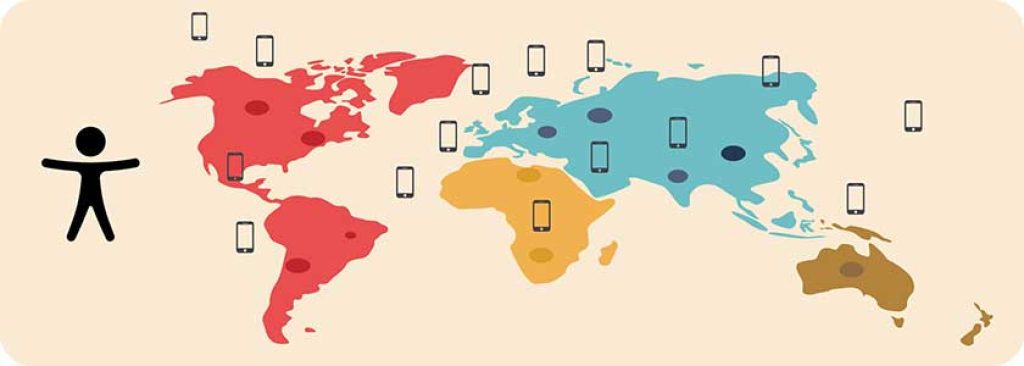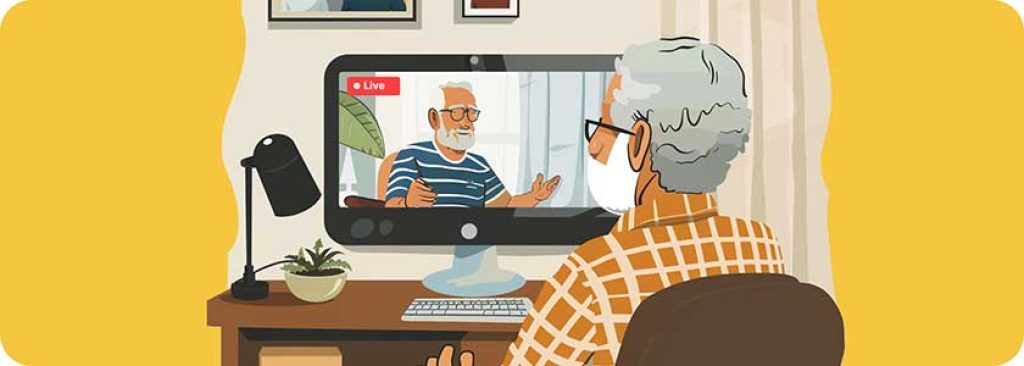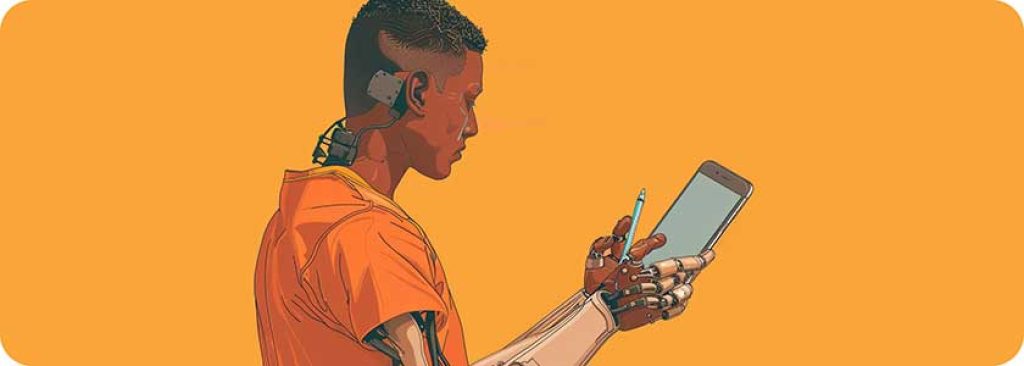iPhone Accessibility Features & Use Cases Explained
Accessibility Features & Uses Explained For The Rest Of Us
Smartphones have become indispensable tools in our increasingly connected world. With an estimated 1.46 billion iPhone users worldwide as of 2024, and approximately 143 million in the US alone, iPhones are not just powerful tools for reaching out, interacting with friends and family, and finding news, information, education and entertainment. At roughly 29% of the global mobile device market share, iPhones are a force to be reckoned with. Their base-level interface and bundled apps are influential in ways that many people simply don’t notice. With so many users walking (or rolling) around the planet with an iPhone in hand (or assistive grip), iPhones and their accessibility features can be leveraged to expand inclusion and accessibility for users with disabilities, at scale.
What’s Missing In The iPhone & Smartphone Picture For Disabled Users? First, before we open up the discussion about challenges for users with disabilities in smartphone use, there’s a 16% gap in ownership. Who actually has a smartphone? 88% of Americans without disabilities, and only 72% of Americans with them. This is part of an overall trend sometimes referred to as the Digital Divide, with studies indicating that people with disabilities are, in general, less likely to own digital devices and use the internet.
With that being said, once a person with a disability has a smartphone, they may encounter significant roadblocks and detours on the mobile version of the information highway.

Difficulties Faced By Smartphone Users With Disabilities
Challenges persist for the individuals with disabilities who use smartphones, including iPhones, to tackle everyday activities and get things done the same way as the majority of the modern public. And the number of people affected by these issues are vast. A World Health Organization report estimates that 1 billion people around the world, about 15% of the total population, live with a disability. And, per a 2021 US Census Bureau survey, 13% of the U.S. civilian population living independently, about 42.5 million Americans, have some form of disability.
Research from the Pew Research Center highlights some key difficulties for smartphone users with disabilities:
- Browsing through smartphone touchscreens can be problematic for users with motor control limitations. Many users find the touchscreen interfaces of modern smartphones difficult to navigate, particularly those with physical disabilities affecting fine motor skills.
- Understanding and interacting with complex interfaces can be a hurdle for users with cognitive or learning disabilities.
- Users who are blind and users with visual impairments often struggle with visual screen content that is not optimized for readability or compatible with screen readers.
- Individuals with hearing impairments and users in the Deaf community may find they cannot engage with audio content without transcription or sign language support.
In fact, for users who have visual or hearing impairments, accessing information that is only given in visual or auditory formats can be laborious or impossible, depending on impairment severity.
While these examples cannot, of course, cover anything near all of the frustrations that people with disabilities can experience when using smartphones, they offer some idea of the disappointment and adversity these users deal with. It's absolutely imperative that we recognize both the diverse needs of users and the profound impact that inclusive design and accessibility features can have on their lives.

Apple & iOS, One Step Ahead In Accessibility
Apple has consistently shown itself as a leader in iPhone accessibility features and settings, making its iPhone range accessible to all users, including those with disabilities. Their commitment to inclusion is evident both in past innovations and in the most recent feature and device updates. Apple has pioneered and integrated groundbreaking features over decades, and continues its dedication with new accessibility features released in 2023, and more in development.
Early innovations like VoiceOver, a screen reader for blind and visually impaired users, paved the way for a robust set of tools. VoiceOver translated the visual interface into an audible one, facilitating navigation through spoken feedback. Over the years, the company has expanded its suite of accessibility tools to include options for a wide range of physical and cognitive disabilities. Recent releases continue this trend. iOS 17, for instance, introduced features like Live Caption, which generates captions for videos and calls in real time, further improving accessibility for users with hearing difficulties, Live Listen, which helps users with hearing aids to better hear conversations in noisy environments, and Voice Control, which allows users to operate their iPhones entirely through voice commands. This commitment to inclusion positions iPhones as powerful tools for users with a wide range of needs.
The evolution of iPhone accessibility settings and features showcases Apple's ongoing investment in research and development to meet the needs of users with disabilities. The company's approach not only offers equitable access and support to individuals who require these features, it also sets a standard for the industry, reflecting the position of tech leadership on the importance of inclusive design. Apple's commitment to accessibility is the engine behind the industry, creating products that serve a diverse global community, and setting a model for others in tech to follow.
With products designed with the belief that everyone, regardless of ability, should be able to use them effectively, Apple's accessibility-forward innovations reflect an understanding that access to technology is a fundamental right.

Exploring iPhone Accessibility Features, Settings & Tools
Let’s unpack how iPhone accessibility features and options can work to support users with disabilities. Apple offers a wide range of iPhone accessibility features to address various user needs. Here's a breakdown of some features, the problems they solve, and guidance on their use:
VoiceOver also provides audio cues while navigating apps, menus, and webpages.
When enabled, VoiceOver reads out loud the names of items on the screen as the user touches them.
Users can magnify the entire screen with Zoom, or use the Magnifier to turn the iPhone into a digital magnifying glass for real-world objects.
Activate Zoom from the Accessibility menu to enlarge the entire display.
Enable Voice Control in Accessibility settings for more comprehensive voice commands over the iPhone's functions.
AssistiveTouch creates a customizable on-screen menu that gives access to gestures, device settings, and common actions.
Boosting Accessibility: Beyond Built-in iPhone Features
While iPhone accessibility features are robust, some situations require additional solutions. Users might find that existing iPhone features don't completely address the specific challenges they face, or they may need more customization. Complex websites, for instance, could require alternative text descriptions for highly technical or detailed images, or more advanced coding adjustments to work seamlessly with screen readers.
Mobile-Friendly Website Design
Web developers can implement responsive design choices in their formatting, making websites easily navigable and readable on mobile devices, including those with small screens. This approach includes using larger fonts, button sizes, and website functionality that works across devices. Responsive design is important for all mobile device users, and it is also part of making websites and digital content accessible to users with disabilities.
Universal Design: A Blueprint for Everyone
Working based on universal design principles means developers and designers create products and environments that are accessible and functional for everyone, regardless of ability or age. This approach includes a wide range of strategies, such as adaptable layouts, intuitive interfaces, and multisensory feedback mechanisms. Universal design considers factors like vision, hearing, motor skills, and cognitive function, as part of creating products and services that work for everyone. By focusing on inclusivity as part of its best practices, universal design enhances the user experience for the broader population while providing essential accessibility features for those with disabilities, making tools and interfaces more intuitive and accessible for all.
Accessibility Extensions & Overlays
These software programs can alter how websites appear on the iPhone screen without changing the website's original layout or functionality. Website accessibility overlay applications work on top of existing interfaces, and can offer additional features, including accessibility options such as screen reading, text enlargement, and voice navigation. Overlays can also customize a website view and other settings to meet the specific needs of the user, at a level that built-in features might not provide. They adjust content presentation in real-time, with accessibility improvements that would not be otherwise possible to achieve, since users cannot get website developers or administrators to immediately fix all obstacles to accessibility.
User-friendly website design for mobile users, together with a range of built-in and add-on accessibility features, can be an excellent dual-approach tactic to extend accessibility and offer a more inclusive experience for iPhone users.
Innovation and Inclusivity: A Shared Path Ahead
The digital world offers what seems like endless possibilities for connection, information, and entertainment. By all rights, those opportunities should be open to everyone. The commitment to developing technologies and digital spaces that are inclusive and accessible reflects a broader societal movement towards equality and empowerment.
The development and release of smartphone accessibility features and tools, both built-in and third-party options, may seem like small things in the grander perspective, but they are important steps towards more inclusive digital landscapes. As technology continues to evolve, creating and maintaining accessible digital interfaces for all types of disabilities only becomes more essential. By prioritizing accessibility on devices like iPhones, reflecting a commitment to barrier-free digital design and equal access for users with disabilities, we move closer to fulfilling the dream: a more inclusive society, where everyone can fully participate and flourish in both electronic and analog environments. With these ideals built into each tech innovation, we take significant strides towards a world where every individual, regardless of their abilities, has equal opportunities to contribute to and benefit from our shared digital future.
FAQs
Not for many types of prosthetic. But, a stylus or specialized pen can do the trick, if the prosthetic hand is able to grasp it, which most can. And, there’s actually an iPhone app that can help people use their prosthetic limbs.

Yes. Apple offers an accessibility simulator on their website that allows you to experience how VoiceOver, Switch Control, and other features function before purchasing a device.
Yes, iPhone features like AssistiveTouch and Reduce Motion can minimize the impact of tremors on touchscreen interactions. AssistiveTouch creates an on-screen menu for various actions, and Reduce Motion minimizes screen animations that might trigger seizures or tremors.
Apple places a high emphasis on user privacy. Data processing related to accessibility features is designed to be secure and private, with explicit user consent required for any data collection.
Apple actively seeks voluntary feedback from the community through various channels, including accessibility support services, user forums, and direct feedback options within the devices. This input is crucial for the continuous improvement of their features, and it is collected in a way that protects user privacy.
Apple offers comprehensive guides and tutorials on its website and through the iPhone's Settings under Accessibility. These resources are designed to help users understand and make the most of the available features.
Many, but not all. Apple strives to make its accessibility features available globally, including support for multiple languages. However, the availability of specific features can vary by region. Check regional resources for accurate local information.
Apple has a comprehensive Accessibility website with detailed user guides, tutorials, and information on all built-in features. Visit your local Apple Store for hands-on exploration of these features with trained staff.









